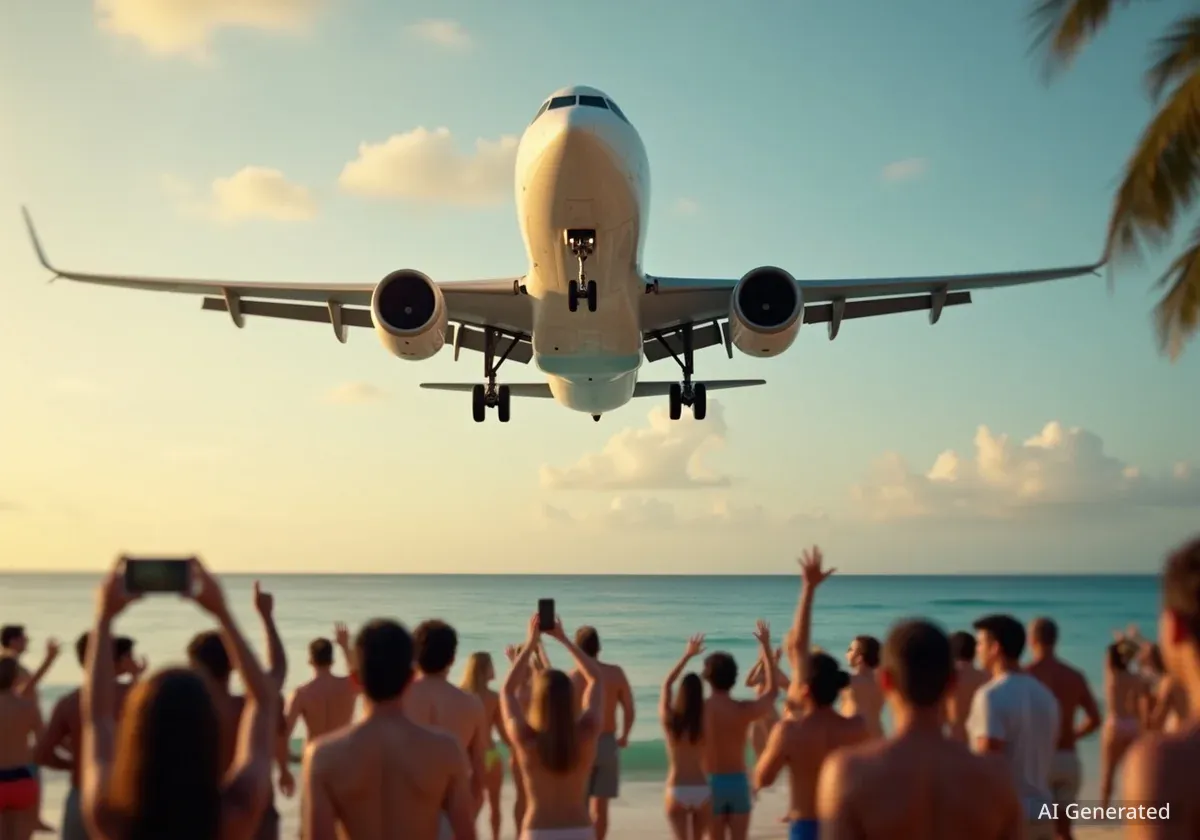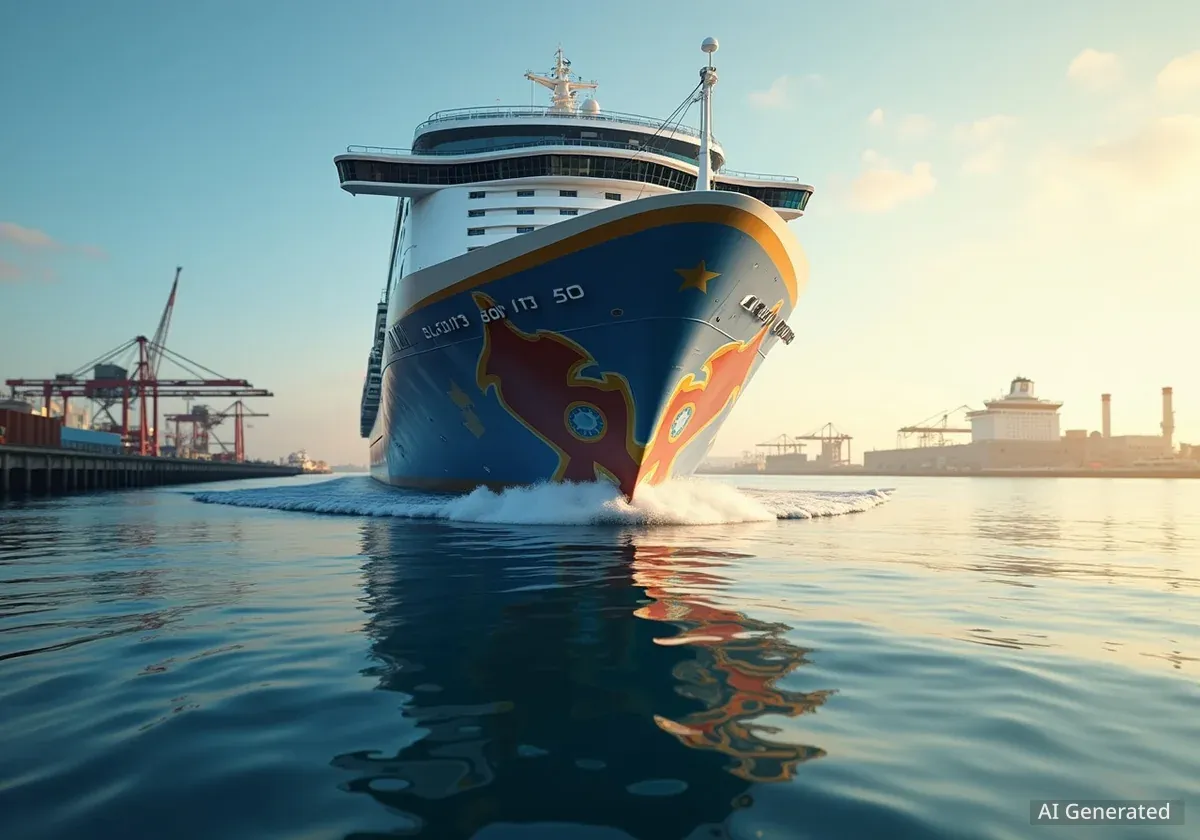Maho Beach, located on the Caribbean island of Saint Martin, draws visitors globally due to its unique position directly next to Princess Juliana International Airport's runway. Tourists gather to watch large aircraft land just feet above their heads, creating a popular spot for aviation enthusiasts and social media content creators.
Key Takeaways
- Maho Beach offers a unique view of aircraft landing at Princess Juliana Airport.
- The airport is a major transport hub for the northeastern Caribbean, handling over one million travelers annually.
- Despite safety warnings, some tourists seek the jet blast during takeoffs, leading to past injuries and one fatality.
- The airport, originally a military airstrip, was rebuilt after Hurricane Irma in 2017.
- Pilots often enjoy the challenging approach and the crowds gathered on the beach.
Proximity to Princess Juliana Airport
Princess Juliana International Airport (SXM) on Saint Martin is known for its short runway. This design means planes approach very low over Maho Beach. A single road separates the beach from the landing strip, positioning onlookers directly under incoming aircraft.
During peak travel seasons, the airport can see between 50 and 70 flights landing daily. This high frequency offers many opportunities for visitors to witness the low approaches. The experience is often described as intense.
"It's scary," says Franklin Wilson, who works in the operations department at the airport. "It feels like it's coming straight at you."
Airport Code and Traffic
- IATA Code: SXM
- Annual Travelers: Over one million
- Direct Flights: From France, Netherlands, and various US locations
Cultural Blend and Travel Hub Status
Saint Martin is known as "The Friendly Island." It covers 36 square miles and is divided into two parts. The northern section, larger in size, is French-ruled and called Saint-Martin. The southern part, more populated, is Dutch and known as Sint Maarten.
While the island offers a mix of cultures and cuisines, and serves as a base for island hopping, the airport itself is a significant draw. Most international flights arrive at Princess Juliana, on the Dutch side. This makes the airport a central transport hub for the northeastern Caribbean.
"It is a thrill," says May-Ling Chun, Sint Maarten's director of tourism. "You're asking yourself: where am I going to land? People are kind of squeezing the arms of their chairs while they're looking out the window."
Aviation Enthusiast Destination
The airport has been operational for over 80 years, beginning as a military airstrip in 1942. Its unique landing conditions have made it famous among aviation enthusiasts worldwide. In recent years, it has become a popular location for influencers and content creators. They visit to capture dramatic photos and videos of planes landing.
Many consider visiting Maho Beach a bucket list item. Irving Maduro, who works in airport operations and is a freelance photographer, notes the high demand for photos. He often receives requests from influencers.
"It's on a lot of people's bucket lists," says Maduro. "I get quite a few influencers messaging me wanting their pictures taken."
Island Geography
Saint Martin's unique geography, with the runway so close to the public beach, is a primary reason for its fame. This setup allows for unparalleled views of large aircraft, including Boeing 787 Dreamliners and KLM planes, making their final approach.
Pilot Challenges and Performance
Landing at Princess Juliana Airport is considered a challenging and rewarding experience for pilots. The approach requires skimming over the beach before touching down on the runway. This is comparable to the approach at Skiathos International Airport in Greece.
Pilots often enjoy the view of people on the beach below them. Some pilots even display a competitive spirit, aiming for lower approaches. Franklin Wilson, also a freelance photographer, has captured images of planes just a few feet above the fence separating the road from the runway.
While safety remains the top priority, there is an element of performance for the crowds. Some pilots make higher approaches, while others provide what is described as a "show" for the beachgoers. A lower approach typically means a faster landing.
"Once you see the plane combing the ocean, you know this guy's coming in hot," says Wilson. "Because you have to come in at a real speed to maintain that altitude. I have seen tourists scared that the airplane was coming right at them."
One specific Brazilian private jet is known for its consistently low and spectacular Christmas Day landing, according to Wilson. This aircraft provides a consistent highlight for visitors.
Safety Concerns and Past Incidents
Despite the excitement, standing near the runway, especially during takeoffs, carries significant risks. Warnings are clearly posted, advising against standing directly behind planes due to the powerful jet blast. However, some tourists ignore these warnings, seeking to experience the force of the engines.
The jet blast on the beach is strong enough to send people running into the sea. More dangerous attempts involve clinging to the fence for a closer experience. Such actions have led to injuries and, in one instance, a fatality.
In 2017, a 57-year-old tourist from New Zealand died after being knocked off the fence by the blast from a departing Boeing 737. This incident highlights the dangers associated with seeking the jet blast.
"Lots of people go there just for that blast," says Maduro. "You see them hanging on the fence and standing directly behind the aircraft. I don't do that; I know how dangerous it can be, how many thousands of pounds of thrust comes out of the engines."
Resilience and Reopening
In 2017, Hurricane Irma caused severe damage to Saint Martin, including the Princess Juliana Airport. The airport was completely destroyed, leading to significant disruption.
Since then, the airport has undergone extensive rebuilding efforts. Its reconstruction became a symbol of the island's resilience in the face of natural disaster. In 2024, Princess Beatrix of the Netherlands officially reopened the renovated airport.
The reopening marked a significant milestone for the island. The airport's unique features and history continue to make it a beloved destination for both aviation enthusiasts and general travelers. The dynamic nature of landings means no two experiences are exactly alike.
"I've been doing this now for over 20 years," says Maduro. "Every day, it's never the same landing."





